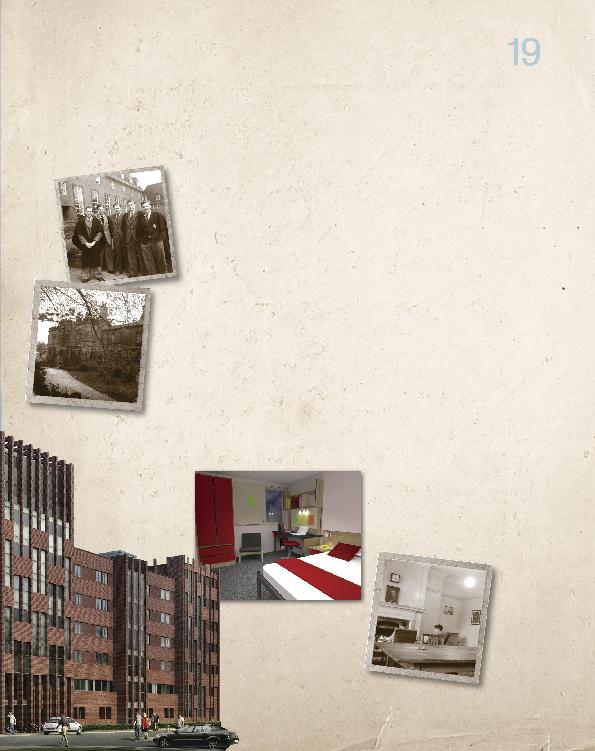
an intrinsic part of their experience at
Liverpool. We asked you to share your
favourite memories:
Hall in 1965. Visitors were permitted from
breakfast time onwards until 11.30pm,
however, it was far from unknown for young
ladies to be in the Halls until the early hours.
One then had to get one's visitor out by a
route which involved going between the
block containing the unmarried tutors' flats
and the range of houses provided for
married tutors. One's `friends' would often
watch until you had reached the crucial point
and then shout out very loudly a somewhat
coarse goodnight message in the hope
of causing as much embarrassment
as possible!"
Salisbury Hall during the mid-70s with great
affection. She was such a warm, funny,
clever lady and made a great impression
on many of us. I also remember having milk
continually stolen from the tiny kitchen
fridges, and a friend crushing senna pods
to put in hers to teach the thief a lesson!"
in the brand new Rathbone Hall. As medical
students started earlier than other students
I was the first student to take up residence
and on the first two nights was the only
student in the hall. As the halls were full
of servants it was like being the master
of a country house for 48 hours!"
Hall when Professor Seaborne Davis was
warden. We used to spend quite a lot of time
playing tennis on the hall courts but one day
we got bored and about half a dozen of us
decided to have a `fight' using as weapons
the stems of the giant plants that we found
growing in the pond near Greenbank Hall.
Unfortunately the plant turned out to be water
hemlock, which triggered massive skin
reactions due to induced photosensitivity.
I lost most of the superficial layer of skin
on my face and hands and others were
similarly affected!"
House in the early 50s had to traverse two
intervening fields in order to have our meals
at Derby Hall. These two fields were divided
by a hedge in a slight hollow, and the path
passed through a gap in the hedge. There
was usually a herd of cattle in one of the
fields and from time to time they would take
it into their heads to gallop through the gap
into the other field. It was important not to
attempt the gap when a stampede
was imminent..."